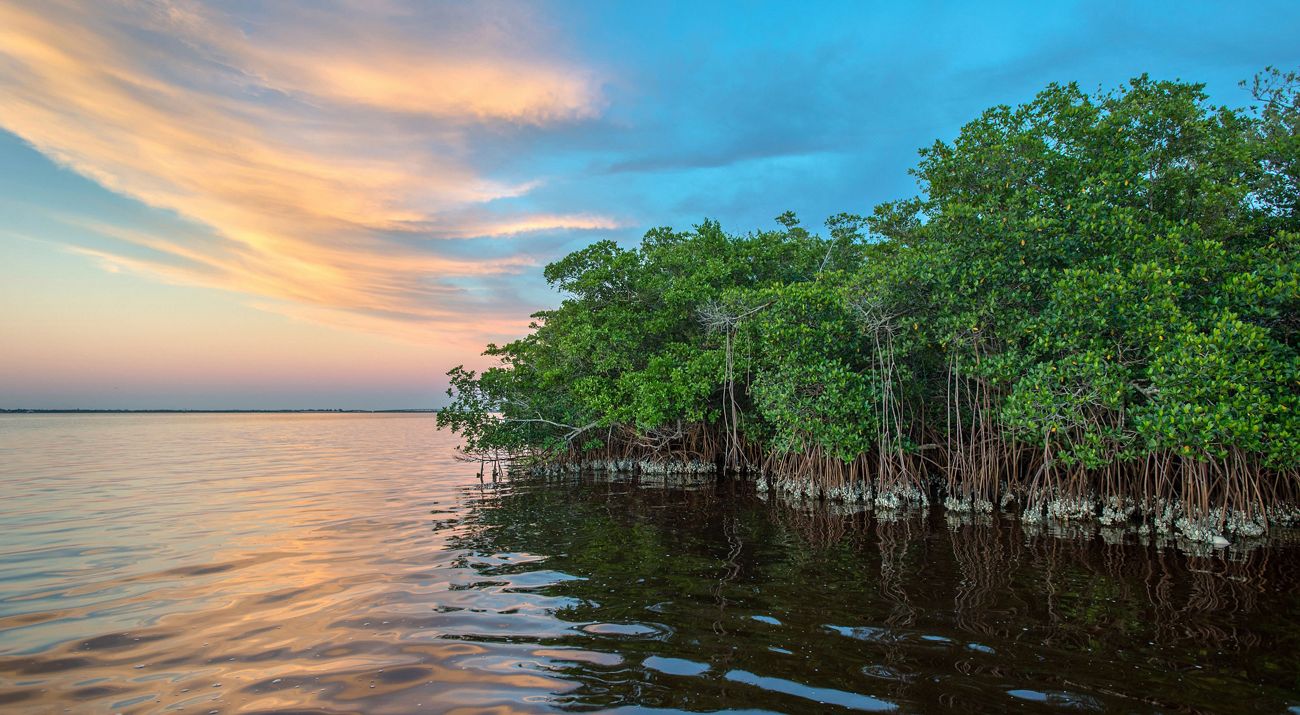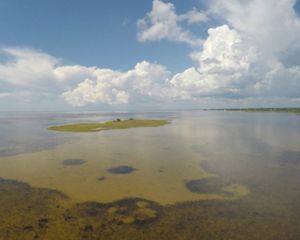Our climate and our ocean are intrinsically linked, and today we are at an important crossroads in both our fight against climate change and our mission to ensure the global health and sustainability of our oceans.
The ocean covers 71 percent of the Earth and plays a critical role in the global carbon cycle. Coastal wetlands – salt marshes, seagrass meadows and mangroves – sequester billions of tons of carbon from our atmosphere in concentrations up to five times higher than terrestrial forests. Wetlands draw in carbon as they grow and transfer much of this into the rich soils held by their roots. The stored carbon can remain in the soil for thousands of years, making coastal wetlands a long-term climate mitigation solution. They are also a continuous sink: layers of soil accumulate as plants die and are buried in the soil, enabling new plants to grow above. If the wetlands are not stressed by human activity, this upward growth can outpace sea level rise.

And unlike other climate mitigation solutions, coastal wetlands protect coastlines by absorbing incoming wave energy and providing storm protection, often at lower costs than built, or grey, infrastructure like seawalls and levees. Indeed, TNC’s own research illustrates how nature-based coastal resilience can save communities hundreds of millions of dollars when severe hurricanes hit the United States coastline, reducing flood damage by up to 29 percent.
Today, 80% of the world’s population lives in coastal areas, making sea level rise and flooding from more frequent, intense storms significant climate-related risks. As our climate changes, the conservation and restoration of coastal wetlands can help protect millions of people, while providing many other benefits such as healthier fisheries, water purification and improved local livelihoods.
Wetlands are being lost at an alarming rate – more than almost any other habitat – due to human activity. Experts estimate that the amount of CO₂ released annually from degraded wetlands is equivalent to the annual emissions of the United Kingdom. It is critical that we protect and restore the world’s “blue carbon” systems. Not only will wetlands deliver ongoing sequestration with a net cooling effect on the planet, they will also provide critical protection from erosion, storms, and floods to communities, shorelines and coastal economies.
Our expertise in this area stems from our ability to work on the ground in meaningful ways with partners in government, industry, local communities and NGOs, and to connect that work to influence global policy, market and finance to advance work at scale. Our strategy focuses on using our ocean and coastal ecosystems to mitigate and adapt to climate change.
Mitigation: We know that by avoiding degradation of coastal wetlands and by conserving these natural systems to increase the amount blue carbon they are able to sequester, we can make a meaningful difference in our fight against climate change. Through scientific research, site- based demonstrations and policy reform, we will educate stakeholders about the opportunity and value coastal wetlands can provide as a natural climate solution for mitigation.
Around the world, 177 countries have at least one blue carbon ecosystem. One of the biggest opportunities for catalyzing conservation and restoration of these ecosystems is through the United Nations Framework Convention on Climate Change (UNFCCC). TNC is working with countries to include coastal wetlands in their Nationally Determined Contributions (NDCs) that will help them meet carbon mitigation targets under the Paris Agreement. We are also exploring various financial mechanisms that could be used to incentivize conservation and restoration of blue carbon ecosystems, including carbon markets.
Adaptation: Our goal is to mainstream the role of nature and nature-based defenses as tools to reduce risk from storms, floods and sea level rise and to significantly scale up investment in nature-based solutions for climate adaptation. We will do this by transforming how global decision-makers—including development banks, governments, and the insurance industry—evaluate natural infrastructure in risk assessment and development planning.
From the Florida Keys to the Philippines, we are building the scientific case for the protective value of nature for communities and economies, while working with local communities to ensure they are able to adapt to climate change.
Mangrove Conservation in Berau: The Nature Conservancy and Blue Ventures are developing a blue carbon initiative in the mangroves of East Kalimantan, a province that possess one of Indonesia’s one of the highest coverage of mangroves but also high rates of deforestation and degradation. The project will operate both at the regional and local scale in partnership with government officials and local leaders on the wider issues and drivers of deforestation.
The project intends to address these challenges by developing alternative livelihoods for mangrove communities, improving the policy framework for mangrove protection and developing sustainable mangrove management plans.


